
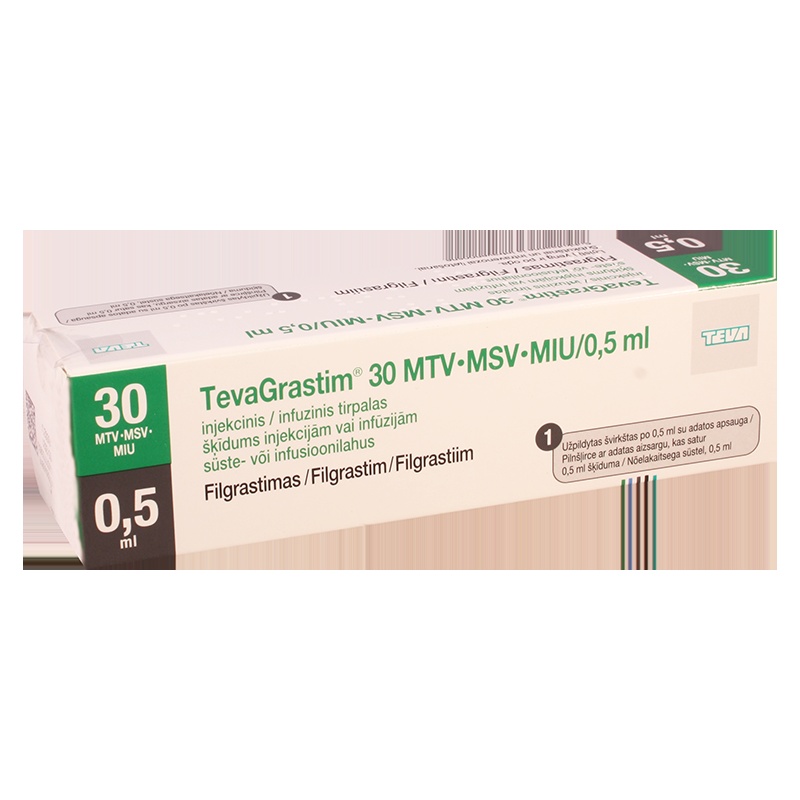
TEVAGRASTIM 30 MU/0.5 ml SOLUTION FOR INJECTION OR INFUSION


How to use TEVAGRASTIM 30 MU/0.5 ml SOLUTION FOR INJECTION OR INFUSION
Introduction
Package Leaflet: Information for the User
Tevagrastim 30 MUI/0.5 ml Solution for Injection and Infusion
Tevagrastim 48 MUI/0.8 ml Solution for Injection and Infusion
filgrastim
Read all of this leaflet carefully before you start using this medicine because it contains important information for you.
- Keep this leaflet, you may need to read it again.
- If you have any further questions, ask your doctor, pharmacist, or nurse.
- This medicine has been prescribed for you only. Do not pass it on to others. It may harm them, even if their signs of illness are the same as yours.
- If you get any side effects, talk to your doctor, pharmacist, or nurse. This includes any possible side effects not listed in this leaflet. See section 4.
Contents of the pack
- What is Tevagrastim and what is it used for
- What you need to know before you use Tevagrastim
- How to use Tevagrastim
- Possible side effects
- Storage of Tevagrastim
- Contents of the pack and other information
- Information for self-injection
- This information is intended only for healthcare professionals
1. What is Tevagrastim and what is it used for
What is Tevagrastim
Tevagrastim is a white blood cell growth factor (granulocyte-colony stimulating factor) and belongs to a group of medicines called cytokines. Growth factors are proteins that are produced naturally in the body, but can also be produced using genetic engineering for use as a medicine. Tevagrastim works by making the bone marrow produce more white blood cells.
What is Tevagrastim used for
A reduction in the number of white blood cells (neutropenia) can occur for several reasons and makes your body less able to fight infections. Tevagrastim stimulates the bone marrow to produce new white blood cells quickly.
Tevagrastim can be used:
- to increase the number of white blood cells after chemotherapy to help prevent infections;
- to increase the number of white blood cells after a bone marrow transplant to help prevent infections;
- before high-dose chemotherapy to make the bone marrow produce more stem cells, which can be collected and returned to your body after treatment. These cells can be collected from you or a donor. The stem cells will then return to the bone marrow and produce blood cells;
- to increase the number of white blood cells if you have severe chronic neutropenia to help prevent infections;
- to help reduce the risk of infection in patients with advanced HIV infection.
2. What you need to know before you use Tevagrastim
Do not use Tevagrastim
- if you are allergic to filgrastim or any of the other ingredients of this medicine (listed in section 6).
Warnings and precautions
Consult your doctor, pharmacist, or nurse before starting treatment with Tevagrastim.
Tell your doctor before starting treatment if you have:
- sickle cell anaemia, as this medicine may cause sickle cell crisis;
- osteoporosis (bone disease).
Tell your doctor immediately during treatment with Tevagrastim if:
- you have sudden signs of allergy, such as rash, itching, or hives on the skin, swelling of the face, lips, tongue, or other parts of the body, shortness of breath, wheezing, or difficulty breathing, as these may be signs of a severe allergic reaction (hypersensitivity);
- you have swelling of the face or ankles, blood in the urine, or brown-coloured urine, or if you notice that you are urinating less often than usual (glomerulonephritis);
- you have pain in the upper left side of the abdomen (abdominal pain), pain under the left side of the rib cage, or pain in the left shoulder tip (these may be symptoms of an enlarged spleen [splenomegaly] or a possible rupture of the spleen);
- you notice unusual bleeding or bruising (these may be symptoms of a decrease in platelets in the blood [thrombocytopenia], with a reduced ability of the blood to clot);
- you have symptoms of inflammation of the aorta (the large blood vessel that carries blood from the heart to the rest of the body), this has rarely been reported in patients with cancer and in healthy donors. Symptoms may include fever, abdominal pain, general malaise, back pain, and increased inflammatory markers. Tell your doctor if you have these symptoms.
Loss of response to filgrastim
If you experience a loss of response or if it is not possible to maintain a response to treatment with filgrastim, your doctor will investigate the causes, including whether you have developed antibodies that may neutralize the activity of filgrastim.
Your doctor may want to closely monitor you, see section 4 of the package leaflet.
If you are a patient with severe chronic neutropenia, you may be at risk of developing blood cancer (leukaemia, myelodysplastic syndrome [MDS]). Talk to your doctor about the risks of developing blood cancer and the tests that should be performed. If you develop or are likely to develop blood cancer, you should not use Tevagrastim unless your doctor tells you to.
If you are a stem cell donor, you must be between 16 and 60 years old.
Be careful with other products that stimulate white blood cells
Tevagrastim belongs to a group of medicines that stimulate the production of white blood cells. Your doctor should always record the exact product you are using.
Other medicines and Tevagrastim
Tell your doctor or pharmacist if you are using, have recently used, or might use any other medicines.
Pregnancy and breastfeeding
Tevagrastim has not been studied in pregnant or breastfeeding women.
Tevagrastim is not recommended during pregnancy.
It is important that you tell your doctor:
- if you are pregnant or breastfeeding;
- if you think you may be pregnant; or
- if you plan to become pregnant
If you become pregnant during treatment with Tevagrastim, tell your doctor. Unless your doctor tells you otherwise, you must stop breastfeeding if you use Tevagrastim.
Driving and using machines
Tevagrastim has a minor influence on your ability to drive and use machines. This medicine may cause dizziness. It is recommended that you wait and see how you feel after administration of the medicine before driving or operating machinery.
Tevagrastim contains sorbitol
This medicine contains 50 mg of sorbitol in each ml.
For intravenous administration
Sorbitol is a source of fructose. If you (or your child) have hereditary fructose intolerance (HFI), a rare genetic disorder, you (or your child) should not receive this medicine. Patients with HFI cannot break down fructose, which can cause serious side effects. Consult your doctor before receiving this medicine if you (or your child) have HFI or if your child cannot take sweet foods or drinks because they cause nausea, vomiting, or unpleasant effects such as bloating, stomach cramps, or diarrhoea.
Tevagrastim contains sodium
This medicine contains less than 1 mmol of sodium (23 mg) per pre-filled syringe; this is essentially “sodium-free”.
3. How to use Tevagrastim
Follow the instructions for administration of this medicine exactly as told by your doctor or pharmacist. If you are unsure, consult your doctor or pharmacist again.
How is Tevagrastim administered and how much should you take?
Tevagrastim is usually administered once a day as an injection into the tissue just under the skin (known as a subcutaneous injection). It can also be administered once a day as a slow injection into a vein (known as an intravenous infusion). The usual dose varies depending on your disease and weight. Your doctor will tell you how much Tevagrastim to take.
Patient with bone marrow transplant after chemotherapy:
You will usually receive your first dose of Tevagrastim at least 24 hours after chemotherapy and at least 24 hours after receiving your bone marrow transplant.
You or the people caring for you may be taught how to administer subcutaneous injections so that you can continue treatment at home. However, you should not attempt to do this unless your healthcare professional has trained you properly.
How long will you need to take Tevagrastim?
You will need to take Tevagrastim until your white blood cell count is normal. You will have regular blood tests to monitor the number of white blood cells in your body. Your doctor will tell you how long you need to take Tevagrastim.
Use in children
Tevagrastim is used to treat children who are receiving chemotherapy or who have a low white blood cell count (severe neutropenia). The dose given to children receiving chemotherapy is the same as for adults.
If you use more Tevagrastim than you should
Do not increase the dose that your doctor has prescribed. If you have used more Tevagrastim than you should, contact your doctor or pharmacist as soon as possible.
If you forget to use Tevagrastim
If you have missed an injection, or if you have injected less dose, contact your doctor as soon as possible. Do not take a double dose to make up for forgotten doses.
If you have any other questions on the use of this medicine, ask your doctor, pharmacist, or nurse.
4. Possible side effects
Like all medicines, this medicine can cause side effects, although not everybody gets them.
Important side effects
It is important that you contact your doctor immediately:
- if you experience an allergic reaction, including weakness, low blood pressure, difficulty breathing, swelling of the face (anaphylaxis), skin rash, itchy skin rash (urticaria), swelling of the face, lips, mouth, tongue, or throat (angioedema), and shortness of breath (dyspnoea);
- if you experience cough, fever, and difficulty breathing (dyspnoea), as this may be a sign of acute respiratory distress syndrome (ARDS);
- if you experience kidney damage (glomerulonephritis). Kidney damage has been observed in patients receiving filgrastim. Contact your doctor immediately if you notice swelling of the face or ankles, blood in the urine, or brown-coloured urine, or if you notice that you are urinating less often than usual;
- if you experience any or a combination of the following side effects:
- swelling that may be associated with urinating less often, difficulty breathing, swelling, and a feeling of fullness in the abdomen, and a general feeling of tiredness. These symptoms usually develop quickly.
These may be symptoms of a condition called “capillary leak syndrome” and can cause blood to leak from small blood vessels into other parts of your body and require urgent medical attention.
- if you experience a combination of the following symptoms:
- fever, chills, or feeling very cold, high heart rate, confusion or disorientation, difficulty breathing, severe pain or discomfort, and sweaty skin.
These could be symptoms of a condition called “sepsis” (also called “blood poisoning”), a serious infection with a whole-body inflammatory response that can be life-threatening and requires urgent medical attention;
- if you experience pain in the upper left side of the abdomen (abdominal pain), pain under the left side of the rib cage, or pain in the left shoulder tip, as this may be a problem with your spleen (enlarged spleen [splenomegaly] or rupture of the spleen);
- if you are being treated for severe chronic neutropenia and have blood in the urine (haematuria). Your doctor will perform regular urine tests if you experience this side effect or if protein is found in your urine (proteinuria).
A common side effect of using Tevagrastim is pain in the muscles or bones (musculoskeletal pain), which can be relieved by taking ordinary pain-relieving medicines (analgesics). In patients undergoing stem cell or bone marrow transplantation, graft-versus-host disease (GVHD) may occur. This is a reaction of the donor cells against the patient receiving the transplant; signs and symptoms include rash on the palms of the hands or soles of the feet, and ulcers and sores in the mouth, gut, liver, skin, eyes, lungs, vagina, and joints.
In healthy donors of stem cells, an increase in white blood cells (leucocytosis) and a decrease in platelets that can reduce the ability of the blood to clot (thrombocytopenia) may be observed. These effects will be monitored by your doctor.
You may experience the following side effects:
Very common(may affect more than 1 in 10 people):
- decrease in platelets, which reduces the ability of the blood to clot (thrombocytopenia)
- low red blood cell count (anaemia)
- headache
- diarrhoea
- vomiting
- nausea
- unusual hair loss or thinning (alopecia)
- fatigue
- irritation and swelling of the lining of the digestive tract (mucositis)
- fever (pyrexia)
Common(may affect up to 1 in 10 people):
- inflammation of the lungs (bronchitis)
- infection of the upper respiratory tract
- infection of the urinary tract
- decreased appetite
- sleeping problems (insomnia)
- dizziness
- decreased sensitivity, especially in the skin (hypoesthesia)
- tingling or numbness of the hands or feet (paraesthesia)
- low blood pressure (hypotension)
- high blood pressure (hypertension)
- cough
- coughing up blood (haemoptysis)
- pain in the mouth and throat (oropharyngeal pain)
- nosebleeds (epistaxis)
- constipation
- mouth pain
- enlargement of the liver (hepatomegaly)
- rash
- redness of the skin (erythema)
- muscle cramp
- pain when urinating (dysuria)
- chest pain
- pain
- general weakness (asthenia)
- feeling unwell (malaise)
- swelling of the hands and feet (peripheral oedema)
- increase in certain enzymes in the blood
- changes in blood biochemistry tests
- transfusion reaction
Uncommon(may affect up to 1 in 100 people):
- increase in white blood cells in the blood (leucocytosis)
- allergic reaction (hypersensitivity)
- rejection of the bone marrow transplant (graft-versus-host disease)
- high levels of uric acid in the blood, which can cause gout (hyperuricaemia)
- liver damage caused by blockage of the small veins of the liver (veno-occlusive disease)
- the lungs not working as they should, causing shortness of breath (respiratory failure)
- swelling or fluid in the lungs (pulmonary oedema)
- inflammation of the lungs (interstitial lung disease)
- abnormal chest X-rays (pulmonary infiltrates)
- bleeding in the lungs (pulmonary haemorrhage)
- lack of oxygen absorption in the lungs (hypoxia)
- irregular skin rash (maculopapular rash)
- disease that causes bones to lose density, making them weaker, more fragile, and prone to breaking (osteoporosis)
- reaction at the injection site
Rare(may affect up to 1 in 1,000 people):
- severe pain in the bones, chest, intestines, or joints (sickle cell crisis)
- sudden, life-threatening allergic reactions (anaphylactic reaction)
- swelling and pain in the joints, similar to gout (pseudogout)
- a change in the way your body regulates body fluids that can result in swelling (fluid volume alterations)
- inflammation of the blood vessels in the skin (cutaneous vasculitis)
- painful, inflamed, and dark red ulcers on the extremities and sometimes on the face and neck, with fever (Sweet's syndrome)
- worsening of rheumatoid arthritis
- unusual changes in urine
- decrease in bone density
- inflammation of the aorta (the large blood vessel that carries blood from the heart to the rest of the body), see section 2
Reporting of side effects
If you experience any side effects, talk to your doctor, pharmacist, or nurse. This includes any possible side effects not listed in this leaflet. You can also report side effects directly via the national reporting system listed in Appendix V. By reporting side effects, you can help provide more information on the safety of this medicine.
5. Storage of Tevagrastim
Keep this medicine out of the sight and reach of children.
Do not use this medicine after the expiry date which is stated on the carton and on the pre-filled syringe after EXP. The expiry date is the last day of the month stated.
Store in a refrigerator (2°C - 8°C).
Within its validity period and for ambulatory use, the medicine can be taken out of the refrigerator (2°C - 8°C) and stored at a temperature of up to 25°C for a single period of up to 4 days. If the medicine is not used within these 4 days, it should be returned to the refrigerator (2°C - 8°C) until the expiry date. Pre-filled syringes stored at more than 8°C for more than 4 days should be discarded.
Do not use this medicine if you notice turbidity or particles in the solution.
Medicines should not be disposed of via wastewater or household waste. Ask your pharmacist how to dispose of medicines no longer required. These measures will help protect the environment.
6. Container Contents and Additional Information
Composition of Tevagrastim
- The active substance is filgrastim. Each milliliter of injectable solution and infusion contains 60 million international units (MIU) (600 micrograms) of filgrastim.
Tevagrastim 30 MIU/0.5 ml: each pre-filled syringe contains 30 million international units (MIU) (300 micrograms) of filgrastim in 0.5 ml of solution.
Tevagrastim 48 MIU/0.8 ml: each pre-filled syringe contains 48 million international units (MIU) (480 micrograms) of filgrastim in 0.8 ml of solution.
- The other components are: sodium hydroxide, glacial acetic acid, sorbitol, polysorbate 80, water for injectable preparations.
Appearance of the Product and Container Contents
Tevagrastim is an injectable solution and infusion in a pre-filled syringe with or without a safety device. Tevagrastim is a clear and colorless solution. Each pre-filled syringe contains 0.5 ml or 0.8 ml of solution.
Tevagrastim is supplied in packs of 1, 5, or 10 pre-filled syringes or in multiple packs containing 10 pre-filled syringes (2 packs of 5) with an injection needle and with or without a needle safety protector. Not all pack sizes may be marketed.
Marketing Authorization Holder
TEVA GmbH
Graf-Arco-Strasse 3
89079 Ulm
Germany
Manufacturer
Teva Pharma B.V.
Swensweg 5
2031 GA Haarlem
Netherlands
Merckle GmbH
Graf-Arco-Straße 3
89079 Ulm
Germany
You can request more information about this medicinal product from the local representative of the marketing authorization holder:
België/Belgique/Belgien Teva Pharma Belgium N.V./S.A./AG Tél/Tel: +32 38207373 | Lietuva UAB Teva Baltics Tel: +370 52660203 |
| Luxembourg/Luxemburg Teva Pharma Belgium N.V./S.A./AG Belgique/Belgien Tél/Tel: +32 38207373 |
Ceská republika Teva Pharmaceuticals CR, s.r.o. Tel: +420 251007111 | Magyarország Teva Gyógyszergyár Zrt. Tel: +36 12886400 |
Danmark Teva Denmark A/S Tlf: +45 44985511 | Malta Teva Pharmaceuticals Ireland L-Irlanda Tel: +44 2075407117 |
Deutschland TEVA GmbH Tel: +49 73140208 | Nederland Teva Nederland B.V. Tel: +31 8000228400 |
Eesti UAB Teva Baltics Eesti filiaal Tel: +372 6610801 | Norge Teva Norway AS Tlf: +47 66775590 |
Ελλάδα TEVA HELLAS Α.Ε. Τηλ: +30 2118805000 | Österreich ratiopharm Arzneimittel Vertriebs-GmbH Tel: +43 1970070 |
España Teva Pharma, S.L.U. Tel: +34 913873280 | Polska Teva Pharmaceuticals Polska Sp. z o.o. Tel: +48 223459300 |
France Teva Santé Tél: +33 155917800 | Portugal Teva Pharma - Produtos Farmacêuticos, Lda. Tel: +351 214767550 |
Hrvatska Pliva Hrvatska d.o.o. Tel: +385 13720000 | România Teva Pharmaceuticals S.R.L. Tel: +40 212306524 |
Ireland Teva Pharmaceuticals Ireland Tel: +44 2075407117 | Slovenija Pliva Ljubljana d.o.o. Tel: +386 15890390 |
Ísland Teva Pharma Iceland ehf. Sími: +354 5503300 | Slovenská republika TEVA Pharmaceuticals Slovakia s.r.o. Tel: +421 257267911 |
Italia Teva Italia S.r.l. Tel: +39 028917981 | Suomi/Finland Teva Finland Oy Puh/Tel: +358 201805900 |
Κύπρος TEVA HELLAS Α.Ε. Ελλάδα Τηλ: +30 2118805000 | Sverige Teva Sweden AB Tel: +46 42121100 |
Latvija UAB Teva Baltics filiale Latvija Tel: +371 67323666 | United Kingdom (Northern Ireland) Teva Pharmaceuticals Ireland Ireland Tel: +44 2075407117 |
Date of Last Revision of this Leaflet:
Detailed information on this medicinal product is available on the European Medicines Agency website: http://www.ema.europa.eu.
- Information for Self-Injection
This section contains information on how to administer a self-injection of Tevagrastim. It is essential that you do not attempt to inject yourself without having received the necessary training from your doctor or nurse. If you are unsure about injecting yourself or have any doubts, consult your doctor or nurse.
How to Self-Inject Tevagrastim
You must inject into the tissue just under the skin. This is known as a subcutaneous injection. The injection should be administered every day at approximately the same time.
Equipment Needed for Administration
For subcutaneous injection, you will need:
- a pre-filled syringe of Tevagrastim,
- cotton or a similar material with alcohol.
What to Do Before Administering a Subcutaneous Injection of Tevagrastim
- Try to administer the injection at approximately the same time every day.
- Remove the pre-filled syringe of Tevagrastim from the refrigerator.
- Check the expiration date on the pre-filled syringe (EXP). Do not use it if the date is later than the last day of the month shown.
- Check the appearance of Tevagrastim. It should be a clear and colorless liquid. If there are particles inside, do not use it.
- For a more comfortable injection, let the pre-filled syringe stand at room temperature for 30 minutes or gently hold the pre-filled syringe in your hands for a few minutes. Do not heat Tevagrastim in any other way (e.g., do not heat it in a microwave or in hot water)
- Do notremove the cap from the syringe until you are ready for injection
- Wash your hands carefully.
- Find a comfortable and well-lit place and put everything you need within reach (the pre-filled syringe of Tevagrastim and the cotton).
How to Prepare Your Tevagrastim Injection
Before injecting Tevagrastim, you must:
- Take the syringe and remove the protective cap from the needle gently without tilting it. Separate as indicated in images 1 and 2. Do not touch the needle or push the plunger.
|
|
- A small air bubble may appear in the pre-filled syringe. If there are bubbles, tap the syringe gently with your fingers until the bubbles go to the end of the syringe. With the syringe pointing upwards, push the plunger to remove the air from the syringe.
- The syringe has a scale. Push the plunger until the number (ml) on the syringe corresponds to the dose of Tevagrastim prescribed by your doctor.
- Check again that the dose of Tevagrastim is correct.
- Now you can use the pre-filled syringe.
Where to Inject
The most suitable injection sites are:
- the top of the thighs; and
- the abdomen, except the area around the navel (see image 3).
|
|
If someone else administers the injection, they can also use the back of your upper arms (see image 4)
To avoid the risk of pain at a given point, it is best to change the injection site every day.
How to Inject
- Disinfect the injection site using cotton with alcohol and pinch the skin between your thumb and index finger, without squeezing (see image 5).
- Insert the needle completely into the skin as your nurse or doctor indicated (see image 6).
- Gently pull the plunger to ensure that you have not punctured a vein. If you see blood in the syringe, remove the needle and insert it into another site.
- While keeping the skin pinched, push the plunger slowly and evenly until the entire dose has been administered and the plunger cannot be pushed further. Do not release the pressure on the plunger!
- Inject only the dose prescribed by your doctor.
- After injecting the liquid, remove the needle while maintaining pressure on the plunger and then release the skin.
- Release the plunger. The needle safety protector will move quickly to cover the needle (see image 7).
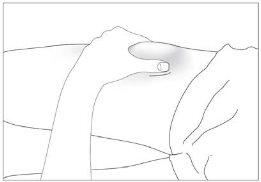
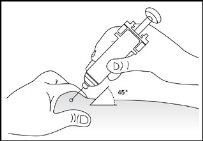
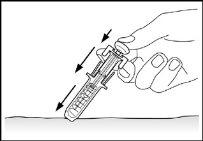
Remember
If you have any doubts, ask for help or advice from your doctor or nurse.
How to Dispose of Used Syringes
- The needle safety protector prevents needlestick injuries after use, so no special disposal precautions are necessary. Dispose of the syringe according to the instructions of your doctor, nurse, or pharmacist.
- This information is intended only for healthcare professionals
Tevagrastim does not contain preservatives. In view of the possible risk of microbial contamination, Tevagrastim pre-filled syringes are for single use only.
Accidental exposure to freezing temperatures does not negatively affect the stability of Tevagrastim.
Tevagrastim should not be diluted with sodium chloride. This medicinal product should not be mixed with other medicinal products except those mentioned below. The dilution of filgrastim may be adsorbed by glass and plastic materials unless diluted as mentioned below.
Tevagrastim can be diluted, if necessary, in a 50 mg/ml (5%) glucose solution for infusion. It is not recommended to dilute to final concentrations below 0.2 MIU (2 μg) per ml. The solution should be inspected visually before use. Only clear solutions without particles should be used. In patients treated with filgrastim diluted to concentrations below 1.5 MIU (15 μg) per ml, human serum albumin (HSA) should be added to a final concentration of 2 mg/ml. Example: if the final injection volume is 20 ml and the total dose of filgrastim is below 30 MIU (300 μg), 0.2 ml of a 20% (200 mg/ml) human albumin solution should be administered. When Tevagrastim is diluted in a 50 mg/ml (5%) glucose solution for infusion, it is compatible with glass and various plastics such as PVC, polyolefin (copolymer of polypropylene and polyethylene), and polypropylene.
After dilution: the chemical and physical stability of the diluted infusion solution has been demonstrated for 24 hours stored between 2 and 8 °C. From a microbiological point of view, the product should be used immediately. If not used immediately, the storage time and conditions of the diluted solution are the responsibility of the user and normally should not exceed 24 hours between 2 and 8 °C, unless the dilution has been performed under validated and controlled aseptic conditions.
Use of the pre-filled syringe with a needle safety protector
The needle safety protector covers the needle after injection to prevent accidental needlestick injuries. This does not affect the way the syringe is used. Push the plunger slowly and evenly until the entire dose has been administered and the plunger cannot be pushed further. Remove the syringe while maintaining pressure on the plunger. The needle safety protector will cover the needle once the plunger is released.
Disposal
Disposal of unused medicinal products and all materials that have come into contact with them should be carried out in accordance with local regulations.
Package Leaflet: Information for the User
Tevagrastim 30 MIU/0.5 ml solution for injection and infusion
Tevagrastim 48 MIU/0.8 ml solution for injection and infusion
filgrastim
Read all of this leaflet carefully before you start using this medicine because it contains important information for you.
- Keep this leaflet, you may need to read it again.
- If you have any further questions, ask your doctor, pharmacist, or nurse.
- This medicine has been prescribed for you only. Do not pass it on to others. It may harm them, even if their signs of illness are the same as yours.
- If you get any side effects, talk to your doctor, pharmacist, or nurse. This includes any possible side effects not listed in this leaflet. See section 4.
Contents of the Package Leaflet
- What is Tevagrastim and what is it used for
- What you need to know before you use Tevagrastim
- How to use Tevagrastim
- Possible side effects
- Storage of Tevagrastim
- Container contents and additional information
- Information for self-injection
- This information is intended only for healthcare professionals
- What is Tevagrastim and what is it used for
What is Tevagrastim
Tevagrastim is a white blood cell growth factor (granulocyte colony-stimulating factor) and belongs to a group of medicines called cytokines. Growth factors are proteins that are produced naturally in the body, but they can also be produced using genetic engineering for use as a medicine. Tevagrastim works by stimulating the bone marrow to produce more white blood cells.
What is Tevagrastim used for
A decrease in the number of white blood cells (neutropenia) can occur for several reasons and makes your body less effective at fighting infections. Tevagrastim stimulates the bone marrow to produce new white blood cells quickly.
Tevagrastim can be used:
- to increase the number of white blood cells after chemotherapy to help prevent infections;
- to increase the number of white blood cells after a bone marrow transplant to help prevent infections;
- before high-dose chemotherapy to stimulate the bone marrow to produce more stem cells, which can be collected and returned to your body after treatment. These stem cells can be collected from you or a donor. The stem cells will then return to the bone marrow and produce blood cells;
- to increase the number of white blood cells if you have severe chronic neutropenia to help prevent infections;
- to help reduce the risk of infections in patients with advanced HIV infection.
- What you need to know before you use Tevagrastim
Do not use Tevagrastim
- if you are allergic to filgrastim or any of the other ingredients of this medicine (listed in section 6).
Warnings and precautions
Consult your doctor, pharmacist, or nurse before starting treatment with Tevagrastim.
Tell your doctor before starting treatment if you have:
- sickle cell anemia, as this medicine may cause sickle cell crisis;
- osteoporosis (bone disease).
Tell your doctor immediately during treatment with Tevagrastim if:
- you have sudden signs of an allergic reaction, such as a rash, itching, or hives on the skin, swelling of the face, lips, tongue, or other parts of the body, shortness of breath, wheezing, or difficulty breathing, as these may be signs of a severe allergic reaction (hypersensitivity);
- you have swelling in your face or ankles, blood in your urine, or urine that is brown in color, or if you notice that you are urinating less frequently than usual (glomerulonephritis);
- you have pain in the upper left part of your abdomen (abdominal pain), pain under the left side of your ribcage or in the left shoulder tip (these may be symptoms of an enlarged spleen [splenomegaly] or a possible rupture of the spleen);
- you notice unusual bleeding or bruising (these may be symptoms of a decrease in platelets in the blood [thrombocytopenia], with a reduced ability of the blood to clot);
- you have symptoms of inflammation of the aorta (the large blood vessel that carries blood from the heart to the rest of the body), this has rarely been reported in patients with cancer and in healthy donors. The symptoms may include fever, abdominal pain, general discomfort, back pain, and increased inflammatory markers. Tell your doctor if you have these symptoms.
Loss of response to filgrastim
If you experience a loss of response or if you are unable to maintain a response to treatment with filgrastim, your doctor will investigate the causes, including whether you have developed antibodies that may neutralize the activity of filgrastim.
Your doctor may want to closely monitor you; see section 4 of the package leaflet. If you are a patient with neutropenia... (rest of the text remains the same)
Si tiene una anemia crónica grave, puede estar en riesgo de desarrollar cáncer de la sangre (leucemia, síndrome mielodisplásico [SMD]). Hable con su médico acerca de los riesgos de desarrollar cáncer de la sangre y de las pruebas que se deben realizar. Si desarrolla o es probable que desarrolle cáncer de la sangre, no debe utilizar Tevagrastim a menos que lo indique su médico.
Si usted es un donante de células madre, debe tener entre 16 y 60 años de edad.
Tenga especial cuidado con otros productos que estimulan los glóbulos blancos
Tevagrastim pertenece a un grupo de medicamentos que estimula la producción de glóbulos blancos. Su médico debe registrar siempre el producto exacto que esté utilizando.
Otros medicamentos y Tevagrastim
Informe a su médico o farmacéutico si está utilizando, ha utilizado recientemente o pudiera tener que utilizar cualquier otro medicamento.
Embarazo y lactancia
Tevagrastim no ha sido estudiado en mujeres embarazadas o en periodo de lactancia.
No se recomienda Tevagrastim durante el embarazo.
Es importante que informe a su médico si usted:
- está embarazada o en periodo de lactancia;
- cree que podría estar embarazada; o
- tiene intención de quedarse embarazada.
Si se queda embarazada durante el tratamiento con Tevagrastim, informe a su médico. A menos que su médico le indique lo contrario, debe dejar de dar el pecho si utiliza Tevagrastim.
Conducción y uso de máquinas
La influencia de Tevagrastim sobre su capacidad para conducir y usar máquinas es pequeña. Este medicamento puede producir mareos. Es aconsejable esperar y ver cómo se siente tras la administración del medicamento antes de conducir o manejar maquinaria.
Tevagrastim contiene sorbitol
Este medicamento contiene 50 mg de sorbitol en cada ml.
Para administración por vía intravenosa
El sorbitol es una fuente de fructosa. Si usted (o su hijo) padecen intolerancia hereditaria a la fructosa (IHF), una enfermedad genética rara, usted (o su hijo) no deben recibir este medicamento. Los pacientes con IHF no pueden descomponer la fructosa, lo que puede causar efectos adversos graves. Consulte con su médico antes de recibir este medicamento si usted (o su hijo) padecen IHF o si su hijo no puede tomar alimentos o bebidas dulces porque les produce mareos, vómitos o efectos desagradables como hinchazón, calambres en el estómago o diarrea.
Tevagrastim contiene sodio
Este medicamento contiene menos de 1 mmol de sodio (23 mg) por jeringa precargada; esto es, esencialmente “exento de sodio”.
- Cómo usar Tevagrastim
Siga exactamente las instrucciones de administración de este medicamento indicadas por su médico o farmacéutico. En caso de duda, consulte de nuevo a su médico o farmacéutico.
¿Cómo se administra Tevagrastim y cuánto debo tomar?
Tevagrastim se administra por lo general una vez al día como una inyección en el tejido justo debajo de la piel (conocida como inyección subcutánea). También se puede administrar una vez al día como una inyección lenta en la vena (conocida como perfusión intravenosa). La dosis habitual varía en función de su enfermedad y peso. Su médico le indicará la cantidad de Tevagrastim que debe tomar.
Pacientes con trasplante de médula ósea después de la quimioterapia:
Normalmente recibirá su primera dosis de Tevagrastim al menos 24 horas después de la quimioterapia y al menos 24 horas después de recibir su trasplante de médula ósea.
A usted o a las personas que le atienden se les puede enseñar a administrar inyecciones subcutáneas para que pueda continuar el tratamiento en su casa. Sin embargo, no debe intentarlo a menos que su profesional sanitario le haya entrenado de forma adecuada.
¿Cuánto tiempo tengo que tomar Tevagrastim?
Tendrá que tomar Tevagrastim hasta que su recuento de glóbulos blancos sea normal. Se le realizarán análisis de sangre periódicos para supervisar el número de glóbulos blancos en su cuerpo. Su médico le indicará cuanto tiempo necesita tomar Tevagrastim.
Uso en niños
Tevagrastim se utiliza para tratar a niños que están recibiendo quimioterapia o que presentan un recuento de glóbulos blancos bajo (neutropenia) grave. La dosis administrada a los niños que están recibiendo quimioterapia es la misma que para los adultos.
Si usa más Tevagrastim del que debe
No aumente la dosis que le ha recetado su médico. Si ha utilizado más Tevagrastim del que debe, póngase en contacto con su médico, o farmacéutico tan pronto como sea posible.
Si olvidó usar Tevagrastim
Si ha olvidado una inyección, o si se inyectó menos dosis, contacte con su médico tan pronto como sea posible. No tome una dosis doble para compensar las dosis olvidadas.
Si tiene cualquier otra duda sobre el uso de este medicamento, pregunte a su médico, farmacéutico o enfermero.
- Posibles efectos adversos
Al igual que todos los medicamentos, este medicamento puede producir efectos adversos, aunque no todas las personas los sufran.
Efectos adversos importantes
Es importante que contacte a su médico inmediatamente:
- si experimenta una reacción alérgica, incluida debilidad, caída de la presión arterial, dificultad para respirar, hinchazón de la cara (anafilaxia), erupción cutánea, erupción cutánea con picor (urticaria), hinchazón de la cara, labios, boca, lengua o garganta (angioedema) y falta de aliento (disnea);
- si experimenta tos, fiebre y dificultad para respirar (disnea), ya que puede ser un signo del síndrome de dificultad respiratoria aguda (SDRA);
- si experimenta daño renal (glomerulonefritis). Se ha observado daño renal en pacientes que recibían filgrastim. Contacte con su médico inmediatamente si observa hinchazón en la cara o los tobillos, sangre en la orina u orina de color marrón, o nota que orina con menor frecuencia de lo habitual;
- si experimenta alguno o una combinación de los siguientes efectos adversos:
- hinchazón que puede estar asociada con orinar con una menor frecuencia, dificultad para respirar, hinchazón y sensación de plenitud abdominal y una sensación general de cansancio. Estos síntomas generalmente se desarrollan rápidamente.
Estos pueden ser síntomas de una enfermedad llamada “síndrome de fuga capilar” y que puede causar que la sangre se escape de un pequeño vaso sanguíneo hacia otros lugares de su cuerpo y necesite atención médica urgente.
- si experimenta una combinación de los siguientes síntomas:
- fiebre, escalofríos o sensación de mucho frío, frecuencia cardiaca alta, confusión o desorientación, dificultad para respirar, dolor extremo o malestar y piel húmeda o sudorosa.
Estos podrían ser síntomas de una afección llamada “sepsis” (también llamada “intoxicación sanguínea”), una infección grave con respuesta inflamatoria de todo el cuerpo que puede ser potencialmente mortal y requiere atención médica urgente;
- si experimenta dolor en la parte superior izquierda del vientre (dolor abdominal), dolor en el lado inferior izquierdo de la caja torácica o dolor en el extremo del hombro, ya que se podría tratar de algún problema con su bazo (agrandamiento del bazo [esplenomegalia] o rotura del bazo);
- si está siendo tratado por neutropenia crónica grave y tiene sangre en la orina (hematuria). Su médico le realizará análisis de orina periódicos si experimenta este efecto adverso o si se encuentran proteínas en su orina (proteinuria).
Un efecto adverso frecuente del uso de Tevagrastim es dolor en los músculos o huesos (dolor musculoesquelético), que se puede remediar tomando medicamentos habituales para aliviar el dolor (analgésicos). En los pacientes sometidos a un trasplante de células madre o de médula ósea, puede aparecer enfermedad del injerto contra huésped (EICH). Esta es una reacción de las células del donante contra el paciente que recibe el trasplante; los signos y síntomas incluyen erupciones en las palmas de las manos o las plantas de los pies, y úlceras y llagas en la boca, intestino, hígado, piel, ojos, pulmones, vagina y articulaciones.
En donantes sanos de células madre se puede observar un incremento de los glóbulos blancos (leucocitosis) y una disminución de las plaquetas que puede reducir la capacidad de su sangre para coagularse (trombocitopenia). Estos efectos serán vigilados por su médico.
Puede experimentar los siguientes efectos adversos:
Muy frecuentes(pueden afectar a más de 1 de cada 10 personas):
- Disminución de las plaquetas, lo que reduce la capacidad de la sangre de coagularse (trombocitopenia)
- Recuento bajo de glóbulos rojos (anemia)
- Dolor de cabeza
- Diarrea
- Vómitos
- Náuseas
- Pérdida o debilitamiento del cabello inusual (alopecia)
- Cansancio (fatiga)
- Irritación e hinchazón del revestimiento del tubo digestivo que va de la boca al ano (inflamación de la mucosa)
- Fiebre (pirexia)
Frecuentes(pueden afectar hasta 1 de cada 10 personas):
- Inflamación de los pulmones (bronquitis)
- Infección del tracto respiratorio superior
- Infección del tracto urinario
- Apetito disminuido
- Problemas para dormir (insomnio)
- Mareos
- Disminución de la sensibilidad, especialmente en la piel (hipoestesia)
- Hormigueo o entumecimiento de las manos o los pies (parestesia)
- Tensión arterial baja (hipotensión)
- Tensión arterial alta (hipertensión)
- Tos
- Tos con sangre (hemoptisis)
- Dolor en la boca y garganta (dolor orofaríngeo)
- Hemorragia nasal (epistaxis)
- Estreñimiento
- Dolor oral
- Aumento del tamaño del hígado (hepatomegalia)
- Erupción
- Enrojecimiento de la piel (eritema)
- Calambre muscular
- Dolor al orinar (disuria)
- Dolor en el pecho
- Dolor
- Debilidad generalizada (astenia)
- Sensación de malestar (malestar general)
- Hinchazón en manos y pies (edema periférico)
- Aumento de ciertas enzimas en la sangre
- Cambios en el análisis bioquímico de la sangre
- Reacción a la transfusión
Poco frecuentes(pueden afectar hasta 1 de cada 100 personas):
- Aumento de los glóbulos blancos de la sangre (leucocitosis)
- Reacción alérgica (hipersensibilidad)
- Rechazo del trasplante de médula ósea (enfermedad del injerto contra el huésped)
- Niveles altos de ácido úrico en la sangre, que pueden causar gota (hiperuricemia) (ácido úrico elevado en sangre)
- Daño hepático causado por el bloqueo de las pequeñas venas del hígado (enfermedad venooclusiva)
- Los pulmones no funcionan como deberían causando falta de aliento (insuficiencia respiratoria)
- Hinchazón o fluido en los pulmones (edema pulmonar)
- Inflamación de los pulmones (enfermedad pulmonar intersticial)
- Radiografías anormales de los pulmones (infiltración pulmonar)
- Sangrado de los pulmones (hemorragia pulmonar)
- Falta de absorción de oxígeno en los pulmones (hipoxia)
- Erupción cutánea irregular (erupción maculopapular)
- Enfermedad que hace que los huesos pierdan densidad haciéndolos más débiles, más frágiles y propensos a romperse (osteoporosis)
- Reacción en la zona de inyección
Raros(pueden afectar hasta 1 de cada 1.000 personas):
- Dolor intenso en los huesos, pecho, intestinos o articulaciones (anemia de células falciformes con crisis)
- Reacciones alérgicas repentinas y que pueden poner en peligro la vida (reacción anafiláctica)
- Hinchazón y dolor en las articulaciones, similar a la gota (pseudogota)
- Un cambio en la forma en que su cuerpo regula los fluidos corporales que puede resultar en hinchazón (alteraciones del volumen de fluidos)
- Inflamación de los vasos sanguíneos de la piel (vasculitis cutánea)
- Úlceras dolorosas, inflamadas y de color rojo oscuro en las extremidades y, a veces, en la cara y el cuello que cursan con fiebre (síndrome de Sweet)
- Empeoramiento de la artritis reumatoide
- Cambios inusuales en la orina
- Disminución de la densidad ósea
- Inflamación de la aorta (el vaso sanguíneo grande que transporta sangre desde el corazón hasta el resto del cuerpo), ver sección 2
Comunicación de efectos adversos
Si experimenta cualquier tipo de efecto adverso, consulte a su médico, farmacéutico o enfermero, incluso si se trata de posibles efectos adversos que no aparecen en este prospecto. También puede comunicarlos directamente a través del sistema nacional de notificación incluido en el Apéndice V. Mediante la comunicación de efectos adversos usted puede contribuir a proporcionar más información sobre la seguridad de este medicamento.
- Conservación de Tevagrastim
Mantener este medicamento fuera de la vista y del alcance de los niños.
No utilice este medicamento después de la fecha de caducidad que aparece en la caja y en la jeringa precargada después de EXP. La fecha de caducidad es el último día del mes que se indica.
Conservar en nevera (entre 2 ºC y 8 ºC).
Dentro de su periodo de validez y para su uso ambulatorio, el medicamento puede sacarse de la nevera (2 ºC – 8 ºC) y almacenarse a una temperatura de hasta 25 ºC durante un único periodo de hasta 4 días. Si el medicamento no se ha usado en esos 4 días, se debe volver a refrigerar (2 ºC – 8 ºC) hasta la fecha de caducidad. Se deben eliminar las jeringas almacenadas a más de 8 ºC durante más de 4 días.
No utilice este medicamento si observa turbidez o partículas en el interior.
Los medicamentos no se deben tirar por los desagües. Pregunte a su farmacéutico cómo deshacerse de los envases y de los medicamentos que ya no necesita. De esta forma, ayudará a proteger el medio ambiente.
- Contenido del envase e información adicional
Composición de Tevagrastim
- El principio activo es filgrastim. Cada ml de solución para inyección y perfusión contiene 60 millones de unidades internacionales (MUI) (600 microgramos) de filgrastim.
Tevagrastim 30 MUI/0,5 ml: cada jeringa precargada contiene 30 millones de unidades internacionales [MUI] (300 microgramos) de filgrastim en 0,5 ml de solución.
Tevagrastim 48 MUI/0,8 ml: cada jeringa precargada contiene 48 millones de unidades internacionales [MUI] (480 microgramos) de filgrastim en 0,8 ml de solución.
- Los demás componentes son: hidróxido de sodio, ácido acético glacial, sorbitol, polisorbato 80, agua para preparaciones inyectables.
Aspecto del producto y contenido del envase
Tevagrastim es una solución para inyección y perfusión en una jeringa precargada. Tevagrastim es una solución transparente e incolora. Cada jeringa precargada contiene 0,5 ml o 0,8 ml de solución.
Tevagrastim se suministra en envases de 1, 5 o 10 jeringas precargadas o en envases múltiples que contienen 10 jeringas precargadas (2 envases de 5) con aguja de inyección y con o sin protector de seguridad para la aguja. Puede que no se comercialicen todos los formatos.
Titular de la autorización de comercialización
TEVA GmbH
Graf-Arco-Straße 3
89079 Ulm
Alemania
Responsable de la fabricación
Teva Pharma B.V.
Swensweg 5
2031 GA Haarlem
Países Bajos
Merckle GmbH
Graf-Arco-Straße 3
89079 Ulm
Alemania
Pueden solicitar más información respecto a este medicamento dirigiéndose al representante local del titular de la autorización de comercialización:
België/Belgique/Belgien Teva Pharma Belgium N.V./S.A./AG Tél/Tel: +32 38207373 | Lietuva UAB Teva Baltics Tel: +370 52660203 |
| Luxembourg/Luxemburg Teva Pharma Belgium N.V./S.A./AG Belgique/Belgien Tél/Tel: +32 38207373 |
Ceská republika Teva Pharmaceuticals CR, s.r.o. Tel: +420 251007111 | Magyarország Teva Gyógyszergyár Zrt. Tel: +36 12886400 |
Danmark Teva Denmark A/S Tlf: +45 44985511 | Malta Teva Pharmaceuticals Ireland L-Irlanda Tel: +44 2075407117 |
Deutschland TEVA GmbH Tel: +49 73140208 | Nederland Teva Nederland B.V. Tel: +31 8000228400 |
Eesti UAB Teva Baltics Eesti filiaal Tel: +372 6610801 | Norge Teva Norway AS Tlf: +47 66775590 |
Ελλάδα TEVA HELLAS Α.Ε. Τηλ: +30 2118805000 | Österreich ratiopharm Arzneimittel Vertriebs-GmbH Tel: +43 1970070 |
España Teva Pharma, S.L.U. Tel: +34 913873280 | Polska Teva Pharmaceuticals Polska Sp. z o.o. Tel: +48 223459300 |
France Teva Santé Tél: +33 155917800 | Portugal Teva Pharma - Produtos Farmacêuticos, Lda. Tel: +351 214767550 |
Hrvatska Pliva Hrvatska d.o.o. Tel: +385 13720000 | România Teva Pharmaceuticals S.R.L. Tel: +40 212306524 |
Ireland Teva Pharmaceuticals Ireland Tel: +44 2075407117 | Slovenija Pliva Ljubljana d.o.o. Tel: +386 15890390 |
Ísland Teva Pharma Iceland ehf. Sími: +354 5503300 | Slovenská republika TEVA Pharmaceuticals Slovakia s.r.o. Tel: +421 257267911 |
Italia Teva Italia S.r.l. Tel: +39 028917981 | Suomi/Finland Teva Finland Oy Puh/Tel: +358 201805900 |
Κúπρος TEVA HELLAS Α.Ε. Ελλάδα Τηλ: +30 2118805000 | Sverige Teva Sweden AB Tel: +46 42121100 |
Latvija UAB Teva Baltics filiale Latvija Tel: +371 67323666 | United Kingdom (Northern Ireland) Teva Pharmaceuticals Ireland Ireland Tel: +44 2075407117 |
Fecha de la última revisión de este prospecto:
La información detallada de este medicamento está disponible en la página web de la Agencia Europea de Medicamentos: http://www.ema.europa.eu.
- Información para auto-inyectarse
Esta sección contiene información de cómo administrarse a uno mismo una inyección de Tevagrastim. Es importante que no
Try to administer an injection without having received the necessary course from your doctor or nurse. It is also important that you have a syringe in a puncture-proof container. If you are not sure if you can inject yourself or if you have any doubts, consult your doctor or nurse.
It is important to discard used syringes in a puncture-proof container.
How to self-inject Tevagrastim
You should inject into the tissue just under the skin. This is known as a subcutaneous injection. The injection should be administered every day at approximately the same time.
Equipment needed for administration
For subcutaneous injection administration, the following is needed:
- a pre-filled Tevagrastim syringe,
- cotton or similar with alcohol,
- a puncture-proof container (plastic container provided by a hospital or pharmacy) to safely discard used syringes.
What should I do before administering a subcutaneous injection of Tevagrastim
- Try to administer the injection at approximately the same time every day.
- Remove the pre-filled Tevagrastim syringe from the refrigerator.
- Check the expiration date indicated on the pre-filled syringe (EXP). Do not use it if the date is later than the last day of the month that appears.
- Check the appearance of Tevagrastim. It should be a clear and colorless liquid. If there are particles inside, do not use it.
- For a more comfortable injection, let the pre-filled syringe rest for 30 minutes at room temperature or gently hold the pre-filled syringe in your hands for a few minutes. Do not heat Tevagrastim in any other way (e.g., do not heat it in a microwave or in hot water)
- Do notremove the syringe cap until you are ready for the injection
- Wash your hands carefully.
- Find a comfortable and well-lit place and place everything you need within reach (the pre-filled Tevagrastim syringe, cotton, and the container for waste).
How should I prepare my Tevagrastim injection
Before injecting Tevagrastim, you should:
- Take the syringe and gently remove the protective cover from the needle without tilting it. Push the plunger. Separate as indicated in figures 1 and 2. Do not touch the needle or push the plunger.
|
|
- A small air bubble may appear in the pre-filled syringe. If there are bubbles, tap the syringe gently with your fingers until the bubbles go to the end of the syringe. With the syringe pointing upwards, extract the air from the syringe by pushing the plunger.
- The syringe has a scale. Push the plunger until the number (ml) on the syringe corresponds to the prescribed dose of Tevagrastim by your doctor.
- Check again that the dose of Tevagrastim is correct.
- Now you can use the pre-filled syringe.
Where should I put the injection
The most suitable sites for injection are:
- the top of the thighs; and
- the abdomen, except the area around the navel (see image 3).
|
|
If someone else administers the injection, they can also use the back of your forearms (see image 4)
To avoid the risk of pain at a given point, it is best to change the injection site every day.
How should I inject myself
- Disinfect the injection site using cotton with alcohol and pinch the skin between your thumb and index finger, without squeezing (see image 5).
- Insert the needle completely into the skin as indicated by your nurse or doctor (see image 6).
- Gently pull the plunger to make sure you have not punctured a vein. If you see blood in the syringe, remove the needle and insert it in another place.
- Inject the liquid slowly and regularly, always keeping the skin pinched.
- Inject only the dose prescribed by your doctor.
- After injecting the liquid, remove the needle and release the skin.
- Use only one syringe for one injection. Do not use any remaining Tevagrastim from the syringe.
|
|
Remember
If you have any doubts, ask for help or advice from your doctor or nurse.
How to dispose of used syringes
- Do not put the protective cover back on used syringes.
- Put used syringes in a puncture-proof container and keep this container out of reach and sight of children.
- Deposit the full container according to the instructions of your doctor, nurse, or pharmacist.
- Never throw used syringes in the regular trash can.
- This information is intended only for healthcare professionals
Tevagrastim does not contain preservatives. In view of a possible risk of microbial contamination, Tevagrastim pre-filled syringes are for single use only.
Accidental exposure to freezing temperatures does not negatively affect the stability of Tevagrastim.
Tevagrastim should not be diluted with sodium chloride. This medication should not be mixed with other medications except as mentioned below. The dilution of filgrastim may be adsorbed by glass and plastic materials except if diluted as mentioned below.
Tevagrastim can be diluted, if necessary, in a glucose solution for infusion 50 mg/ml (at 5%). It is not recommended to dilute to final concentrations below 0.2 MU (2 μg) per ml. The solution should be visually inspected before use. Only clear solutions without particles should be used. In patients treated with filgrastim diluted to concentrations below 1.5 MU (15 μg) per ml, human serum albumin (HSA) should be added to a final concentration of 2 mg/ml. Example: if the final injection volume is 20 ml and the total dose of filgrastim is less than 30 MU (300 μg), 0.2 ml of a 200 mg/ml (20%) human albumin solution should be administered. When Tevagrastim is diluted in a glucose solution for infusion 50 mg/ml (at 5%), it is compatible with glass and various plastics such as PVC, polyolefin (copolymer of polypropylene and polyethylene), and polypropylene.
After dilution: the chemical and physical stability of the diluted infusion solution has been demonstrated for 24 hours stored between 2 and 8 ºC. From a microbiological point of view, the product should be used immediately. If not used immediately, the time and storage conditions of the diluted solution are the responsibility of the user and should not normally exceed 24 hours between 2 and 8 ºC, unless the dilution has been performed under validated and controlled aseptic conditions.
Use of the pre-filled syringe without a safety needle protector
Administer the dose according to the standard protocol.
Elimination
The elimination of unused medication and all materials that have come into contact with it will be carried out in accordance with local regulations.
- Country of registration
- Active substance
- Prescription requiredYes
- Manufacturer
- This information is for reference only and does not constitute medical advice. Always consult a licensed doctor before taking any medication. Oladoctor is not responsible for medical decisions based on this content.
- Alternatives to TEVAGRASTIM 30 MU/0.5 ml SOLUTION FOR INJECTION OR INFUSIONDosage form: INJECTABLE, 12 IU/0.2 mlActive substance: filgrastimManufacturer: Accord Healthcare S.L.U.Prescription requiredDosage form: INJECTABLE, 0.3 mg / prefilled syringeActive substance: filgrastimManufacturer: Accord Healthcare S.L.U.Prescription requiredDosage form: INJECTABLE, 0.3 mg / prefilled syringeActive substance: filgrastimManufacturer: Accord Healthcare S.L.U.Prescription required
Alternatives to TEVAGRASTIM 30 MU/0.5 ml SOLUTION FOR INJECTION OR INFUSION in other countries
The best alternatives with the same active ingredient and therapeutic effect.
Alternative to TEVAGRASTIM 30 MU/0.5 ml SOLUTION FOR INJECTION OR INFUSION in Polonia
Alternative to TEVAGRASTIM 30 MU/0.5 ml SOLUTION FOR INJECTION OR INFUSION in Ucrania
Online doctors for TEVAGRASTIM 30 MU/0.5 ml SOLUTION FOR INJECTION OR INFUSION
Discuss dosage, side effects, interactions, contraindications, and prescription renewal for TEVAGRASTIM 30 MU/0.5 ml SOLUTION FOR INJECTION OR INFUSION – subject to medical assessment and local rules.




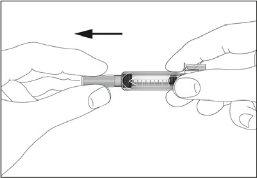
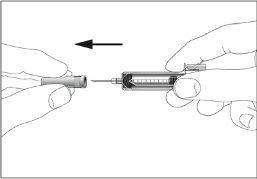
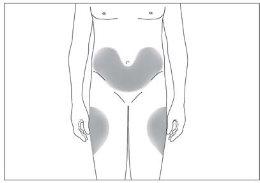
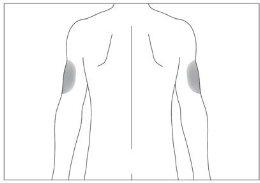

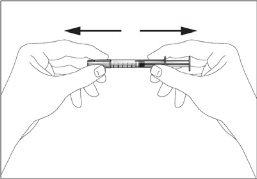 1
1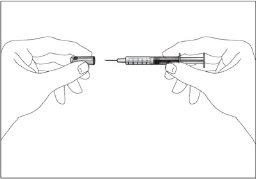 2
2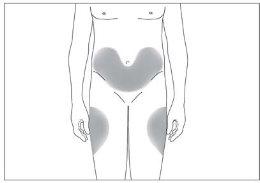 3
3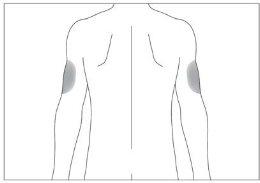 4
4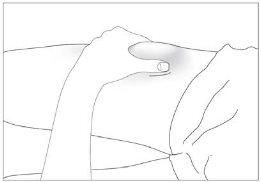 5
5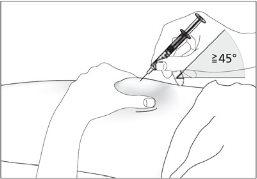 6
6

